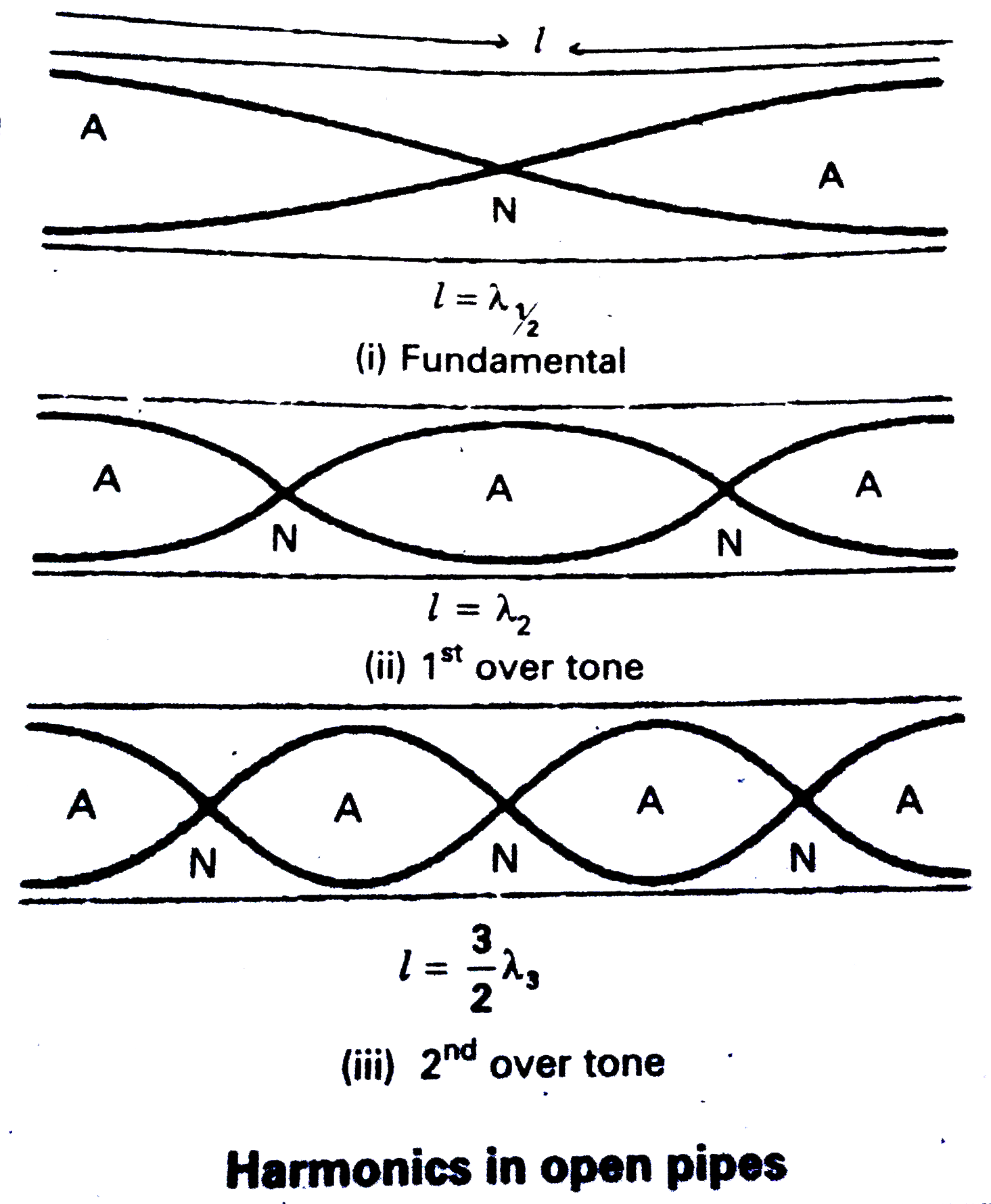InterviewSolution
Saved Bookmarks
| 1. |
Explain the formation of stationary waves in an air column enclosed in open pipe . Derive the equations for the frequencies of the harmonics produced. |
|
Answer» Solution :A pipe, which is opened at both ends is calledopen pipe.When a sound waves is sent through a open pipe , which gets reflected by the earth . Then incident and reflected waves are in same frequency,travelling in the opposite DIRECTIONS aresuper imposedstationary waves are formed. Harmonics in open pipe `:` To form the STATIONARY wave in open pipe, which has to anti nodes at two ends of the pipe with a node between them . `:.` The vibrating length ( l) `=` half of the wavelength `((lambda_(1))/(2))` `l = ( lambda_(1))/(2) implies lambda_(1) = 2l` fundamentalfrequency `v_(1) = (v)/( lambda_(1))` where v is velocity of sound in air `v_(1) =(upsilon)/( 2l) = v `...(1) For second harmonic ( first OVERTONE)will have one more node and antinode than thefundamental. If `lambda_(2)`is wavelength of second harmonic`l = ( 2lambda_(2))/(2) implies lambda_(2) =(2l)/(2)` If `'v_(2)'`is frequency of second harmonic then `v_(2) = ( upsilon)/( lambda_(2))= ( upsilon xx 2)/( 2l) =2v ` `v_(2)= 2v `...(2) Similarly for third harmonic( second overtone ) will have three nodesand four ANTINODES as shown in above FIGURE. If ` lambda _(3)` is wave length of third harmonic ` l = ( 3lambda_(3))/(2)` If `' v_(2)'` is frequency of third harmonic then `v_(3) = ( upsilon)/( lambda_(3)) = ( upsilon xx 3)/( 2l) = 3 v ` `v_(3) =3v `...(3)  Similarly we can find the remaining or higher harmonicfrequencies i.e.`v_(3), v_(4)` etc, can be determined in the same way. Therefore the ratio of the harmonicfrequencies in the open pipe can be written as given below. `v: v_(1): v_(2)= 1:2:3.....` |
|